Remaining capacity estimation of Lithium-ion battery using Maxim MAX17201
Maximum MAX17201
Many electronic devices that can be used while moving, such as smartphones, use lithium-ion batteries. Lithium-ion batteries can explode if misused. However, we can’t do anything if we’re just scared. Therefore, I tried to charge and discharge the lithium-ion battery with own parameters and estimated the battery level.
In Lithium-ion batteries, there is a relationship between the open-circuit voltage and the remaining battery capacity, but this relationship changes as the number of charge-and-discharge cycles increases. The typical terminal voltage of most lithium-ion batteries is 3.7 V. If the terminal voltage is too high (typically above 4.2 V), the lithium ions turn into metallic lithium and react strongly with water. On the other hand, if the terminal voltage is too low (typically below 2.5 V), the battery capacity will be permanently reduced.
The method of charging and discharging the battery capacity in one hour is expressed as 1 C. The number of charge cycles is obtained as the number of times the terminal can be used repeatedly from the fully charged state where the charging current when the terminal voltage becomes 4.2 V is 1/20 C to the discharging state where the terminal voltage becomes 2.5 V. It is known that when a battery deteriorates due to an increase in the number of charging cycles, its internal resistance increases.
Maxim’s MAX17201 estimates the open-circuit voltage and the state of charge (SoC) by measuring the charge-discharge voltage and the battery internal resistance.
Experiment of battery capacity evaluation
The lithium-ion battery used in the experiment is P1832J of KeepPower, China. This cell uses Panasonic cell NCR18650BE. Since the brochure of this cell could not be found on the Panasonic homepage, I referred to the characteristics of the cell NCR18650BD which has characteristics close to the cell. The battery capacity is 3,200 mAh. This means that the battery can be discharged with a load of 3.2 A for 1 hour.
In addition to this lithium-ion battery, I used the MAX17201 Evaluation Kit and Perfect Neo which can charge and discharge a wide range of rechargeable batteries including lithium-ion batteries with arbitrary charging and discharging parameters..
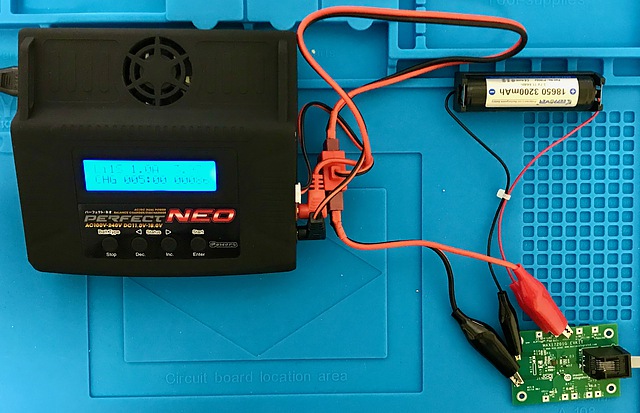
The positive terminal of the lithium-ion battery and the positive terminal of the charger are likely to touch, but there is no problem. Because they are connected.
The MAX17201 communicates with a PC via I2C. This development kit included a USB interface and configuration software.
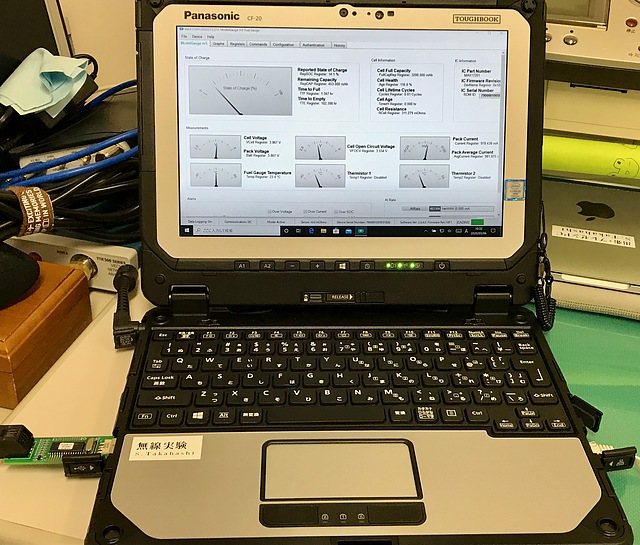
A typical capacity estimation IC needs to set a lot of parameters, but Maxim prepared the configuration wizard that can be set these parameters interactively. Using this, I set the battery capacity to 3,200 mAh, the battery type to NCR, and the other items to default.
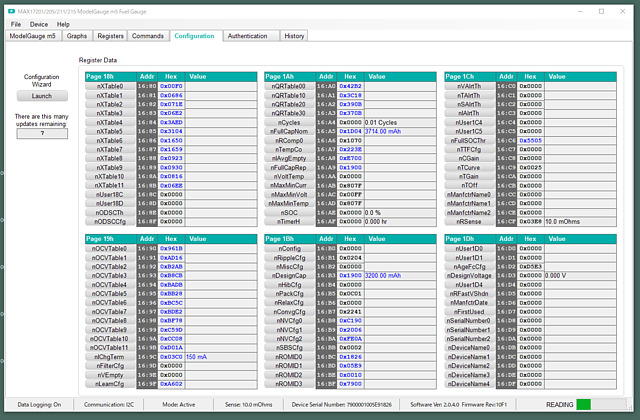
It is recommended that this battery be charged at 0.5 C, so I set the maximum current of the charger to 1.6 A and the standard voltage to 3.7 V. And started charging. The MAX17201 evaluation software screen looks like this:
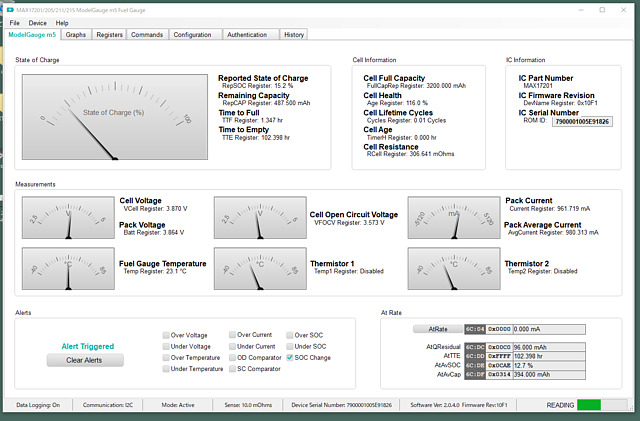
The software displayed the charging voltage, open circuit voltage, charging current and temperature, as well as the battery SoC. We can see these time change graphs.
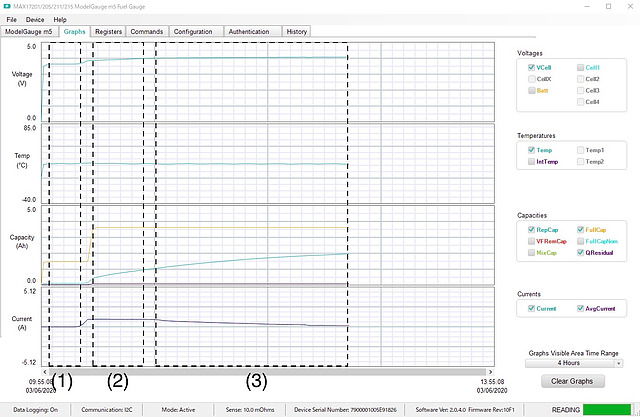
In part (1) of the figure, we can see that this charger precharged this battery with a low charging current (0.1 C) , 1/10 of the typical charging current. When the precharge process was completed, the battery level increased significantly. Next, this charger was charged with a constant current (CC) as shown in part (2) of the figure. After that, the battery was charged at a constant voltage (CV: constant voltage) as shown in part (3) of the figure. The SoC evaluated by the IC was 62.5% when this charger determined to be finish charging.
In the experiment, I also tried discharging at 0.25 C.
Registers and battery authentication function in IC
This software can monitor the status of the MAX17201 registers.
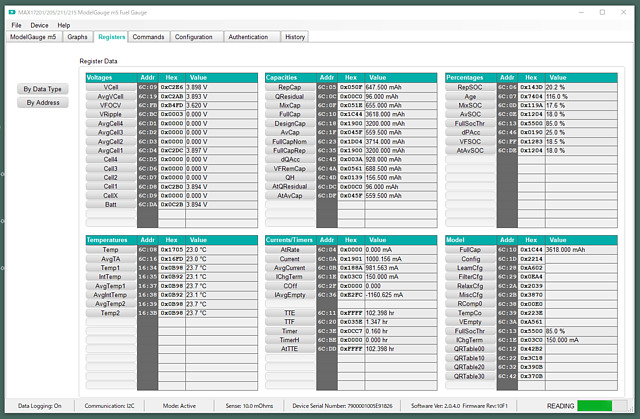
Also, it is possible to prevent the contents of the nonvolatile memory in the TC from being rewritten.
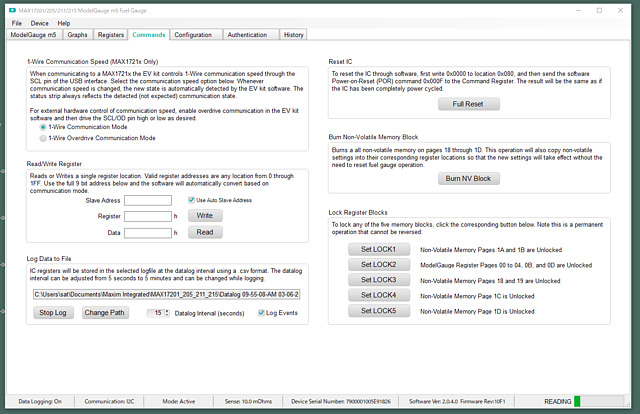
In addition, it seems that it is possible to set a 160-bit challenge word setting to prevent forgery of the battery.
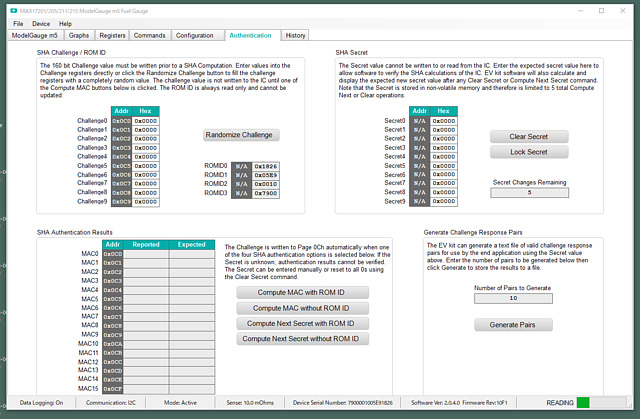
Through this experiment, I deepened my understanding of lithium-ion batteries. I will try to obtain various data while keeping safety in mind.